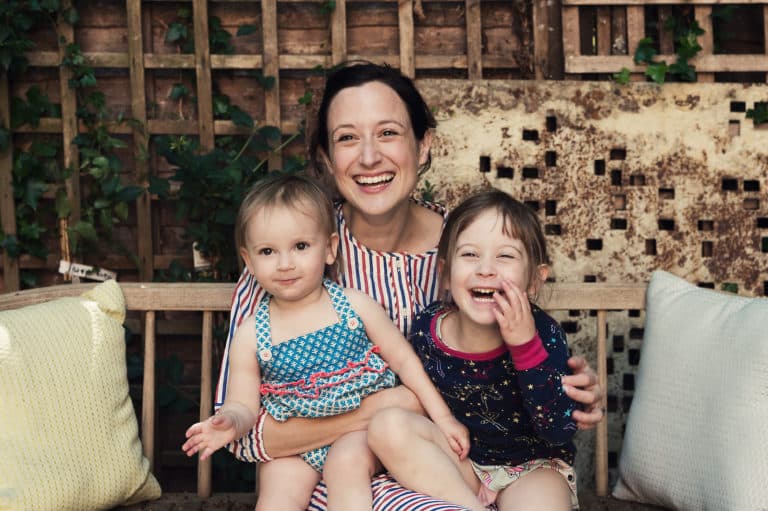Family Ceremony & Storytelling


There are so few ceremonies in our modern life; we really are limited to funerals, weddings, and births to express how we feel about somebody, take pause, and think about our own lives. These ceremonies become markings of time and create chapters in our life. Mortality is at the root of what makes ceremony so poignant. It’s the passing-ness of life, and without ceremony we lose that. Modern life operates on a false plateau of permanence. Part of the reason kids are so challenging and interesting is their physical growth, is that they are an actual disturbance to that myth. Watching your kids grow, allows us to realize how we are all changing, and that time is passing regardless. I think we crave and need more bookmarks to force us to pause and note that.
Kids come to ceremony very naturally, it’s baked into them. Kids recognize what is so precious about life and they approach it with curiosity, with a readiness to be amazed. Ceremony enables us to approach something with respect and deference. Storytelling is the part about how you capture that. Kids quite naturally follow that arc in how they engage with everything. In an interesting way this is what ceremony enables me to do: to build myself a route to what kids connect to more naturally. I have to abstractify myself, but kids can get there right away. What I’m trying to recover is the resonance back to childhood, and kids are just right there.
Fabled Kids was inspired by the things I loved to do in my childhood, which was to read and tell stories. When I started to explore what was available to kids to tell stories in the digital storytelling space, I found a gap. But I was a bureaucrat and bureaucrat to entrepreneur isn’t exactly a common switch…but my idea persisted.
I began to realize that Fabled Kids is trying to recreate what was important to me as an 8 year old: imagination, storytelling, and honouring kids voices. I leaned into the research around the act of imagining and what it does for kids brains, hearts, and empathy – the complete pantheon of skills building. Every six year old I hear from has brilliant ideas, much better than the adults. They have such a unique perspective on the world, by virtue of being relatively new to the world. It’s a short season in a child’s life, and then it goes away. It feels so important to capture while they have it, and to tell them it’s precious. We spend a lot of your adult life trying to recover that freshness of perspective.
There are three components to story play: the first is to inspire imagination and creativity by surrounding your kid with stories and books. The second is to listen. When kids are in their imaginary worlds and sharing it with you, be a participant and deeply listen without making it a teaching moment or directing it in a certain way. Third, celebrate the story by naming it – “that was an incredible story you told”. It can be written down, recorded, or just enjoyed in the moment. Putting boundaries and a container helps to ceremonialize it and give it importance.
The goal of story play isn’t to make kids more creative. Rather, the goal is to get us as caregivers to pay attention to the stories they are already telling in multiple ways and hopefully extending the time they do that, by pointing it out as a valuable activity. We wouldn’t teach a kid to draw by teaching them the formal rules of perspective first. Why do we teach create writing by starting with grammar and then holding your pen? These physicalities are taught instead of giving them the space to scribble and play. I want to do that with their stories, and it starts with oral storytelling and make believe.
My daughter was asked what her hobbies at school were, and she responded “imagining”. Even I found myself resisting that, wondering what the school would think – but of course, that’s our thing! Naming it gives it power and legitimizes it. The challenge is that sometimes parents don’t see this as a “valuable” activity. While you can go on Pinterest and find a million crafts to do at home, there’s not as much out there that encourages imagination and creative play. There’s no shopping list for imagination supplies. You can’t get better at it by doing lots of it – it’s not a progression.
Part of my love of ceremony and tradition comes from nostalgia about my own childhood and how I want my kids to have the same richness of experiences. There are some traditions that we incorporate which are exactly like mine from childhood – my mom was amazing at creating the feeling of celebration. My dad was in the foreign office so we moved the whole time, lots of different houses and countries, and our traditions and ceremonies provided a lifeline to me about what family is. When my children think back to their childhood, I hope they have that same nostalgia I do, and that they remember the shared language, experiences, and stories we created together.

About Fabled Kids
Fabled is a place for kids to create and share their stories. It’s like the best notebook ever – it chats back, gives inspiration, and even publishes. Kids sign up and start typing, recording, or uploading, then get parent/guardian help to share with family and friends. Release the wonder!

About Fabled Kids
Fabled is a place for kids to create and share their stories. It’s like the best notebook ever – it chats back, gives inspiration, and even publishes. Kids sign up and start typing, recording, or uploading, then get parent/guardian help to share with family and friends. Release the wonder!
